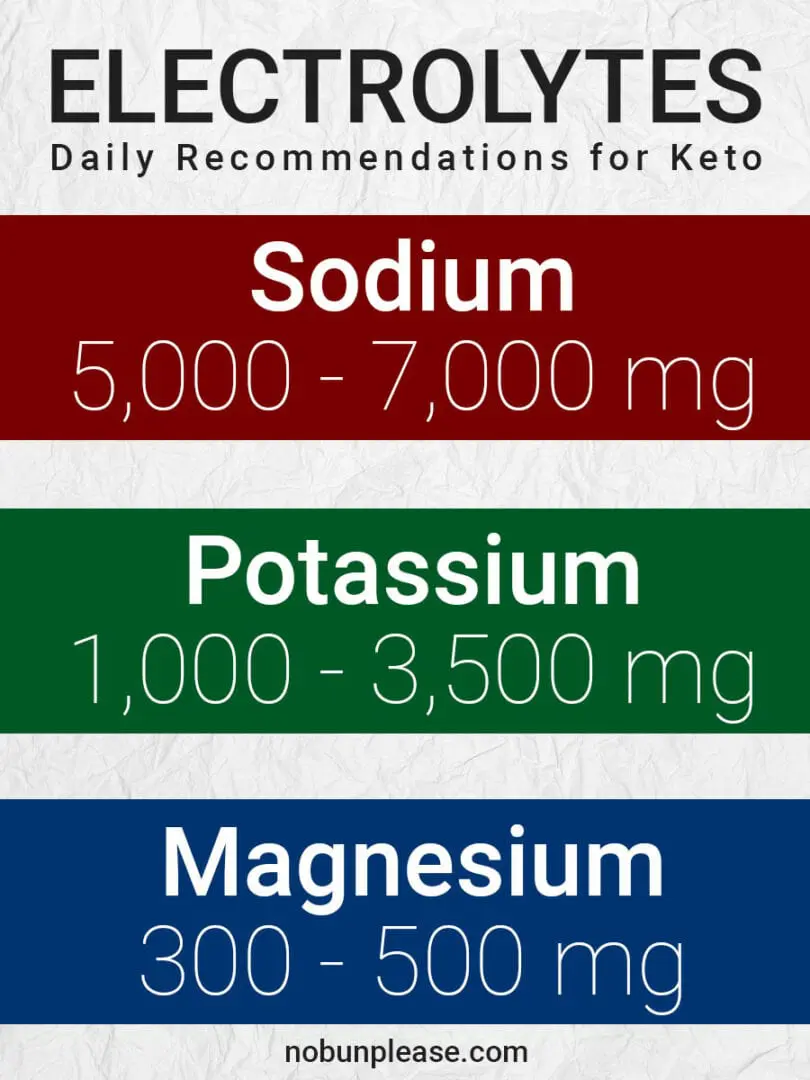“This post contains affiliate links, and I will be compensated if you make a purchase after clicking on my links.”
When following a Keto Diet, it's important to correct any electrolyte imbalances that may come up during your journey. This will help you feel your absolute best and prevent the dreaded Keto Flu!
What are electrolytes?
Electrolytes are minerals that are contained within our bodily fluids. They are responsible for a variety of processes including:
- balancing a healthy pH level
- removal of cellular waste
- ensuring optimal function for our muscles, nerves, heart and brain.
The three main electrolytes that we need to pay attention to are sodium, potassium and magnesium.
What happens if I neglect my electrolytes?
Failure to maintain sufficient electrolyte levels will typically result in something referred to as the Keto Flu.
Symptoms of the Keto Flu may include:
- dehydration
- sluggish-ness
- brain fog
- headaches
- fatigue
- diarrhea
- nausea
Maintaining an electrolytic balance can absolutely make the difference between feeling amazing and feeling horrible.
Sodium
Sodium is the main electrolyte you're going to want to focus on when following Keto. If you start to feel weak or develop a headache, try to consume something that is high in sodium. You could simply drink water with sea salt, or if you're like me, take a swig of pickle juice.
If sodium truly was your issue, the symptoms will typically subside within minutes.
Daily sodium recommendation
The amount of sodium you should try to aim for is 5,000 - 7,000 mg per day.
Keto foods rich in sodium
Anything salty is going to be your friend when it comes to sodium. Some of my favorite ways to supplement include:
- liberally salting your food
- a salty bone broth
- bouillon
- pickle juice
- sea salt in water
- bacon
Potassium
If you ever experience heart palpitations, muscle cramps or twitching, chances are you're low on potassium.
Daily potassium recommendation
You should to aim for 1,000 - 3,500 mg of potassium per day.
Keto foods rich in potassium
Conventional wisdom tells us to reach for a banana or sports drink when we're low on potassium. Unfortunately, that's not a great option for a low carb diet.
Instead, try one of these:
- avocado
- potassium
- cooked spinach
- cooked broccoli
- mushrooms
- Lite Salt (in place of sea salt)
Magnesium
Much like potassium, an imbalance of magnesium can cause side effects like muscle twitching and restlessness.
If you find yourself constipated on the Keto Diet, try a magnesium supplement. Tread lightly though, too much can cause diarrhea.
Magnesium is also a great supplement to take in the evening to promote relaxation and sleep.
Daily magnesium recommendation
You should aim for 300 - 500 mg of magnesium per day.
Foods rich in magnesium
- avocado
- pumpkin seeds
- almonds
- cooked spinach
- artichoke
- dark chocolate

How to get Keto electrolytes
The best way to get electrolytes on Keto is through real food. I tend to get most of my sodium and potassium in pretty easily, but I supplement with magnesium every night.
If you find yourself longing for a Keto electrolytes drink I highly recommend Ultima drink powders. In addition to replenishing the essential electrolytes, this product is made up of clean ingredients and they taste amazing!
Do you supplement electrolytes on a ketogenic diet? Comment below!

Leave a Reply